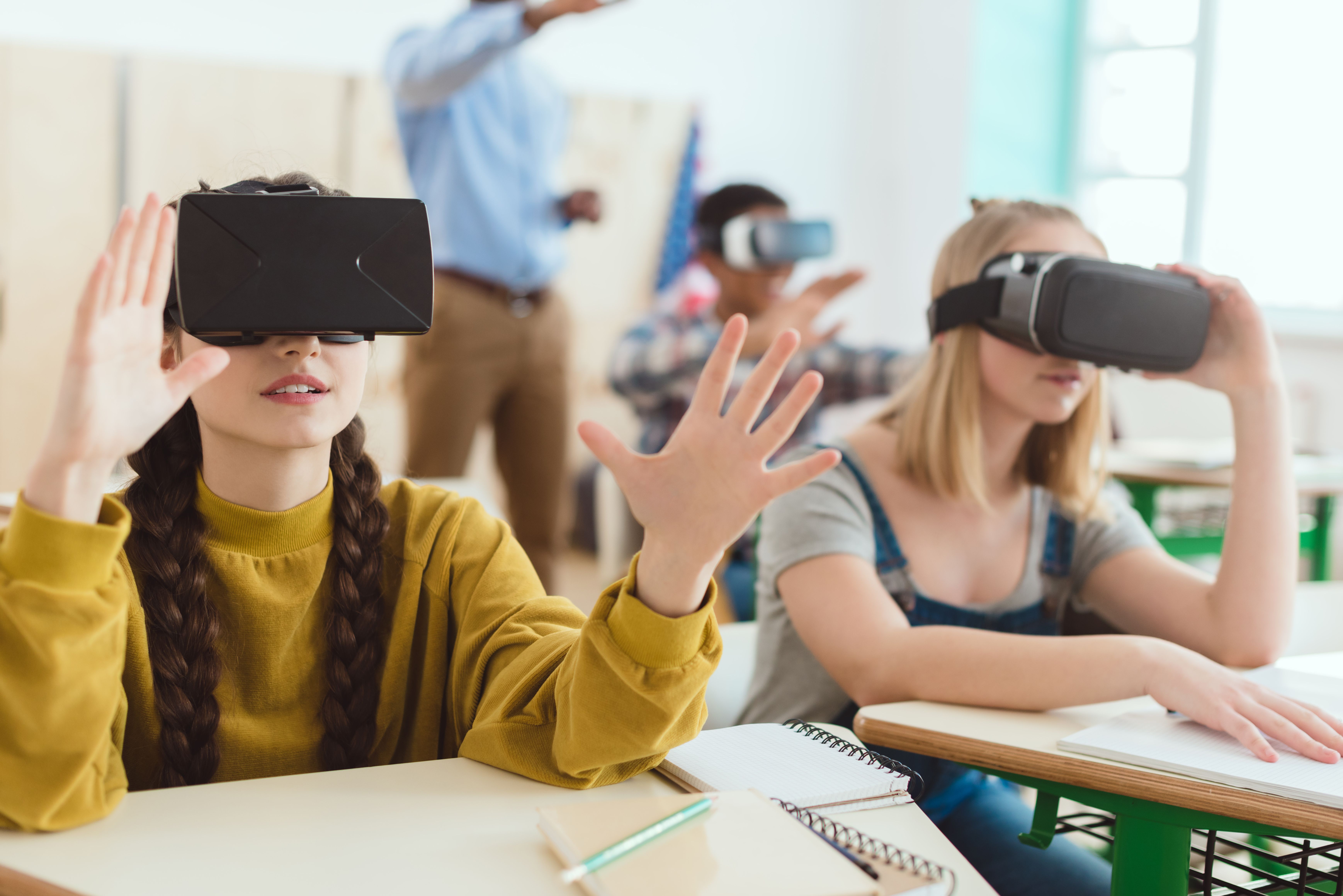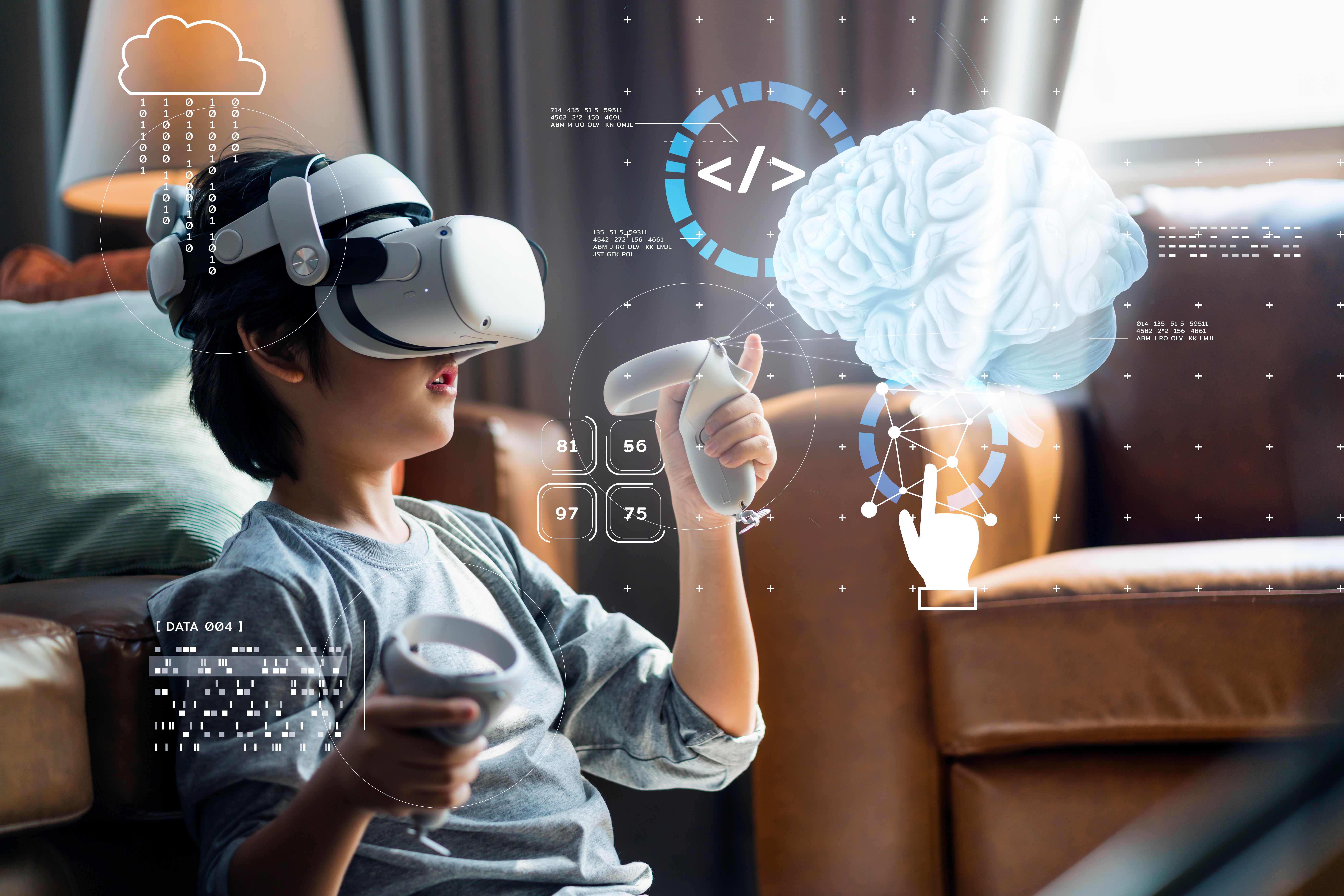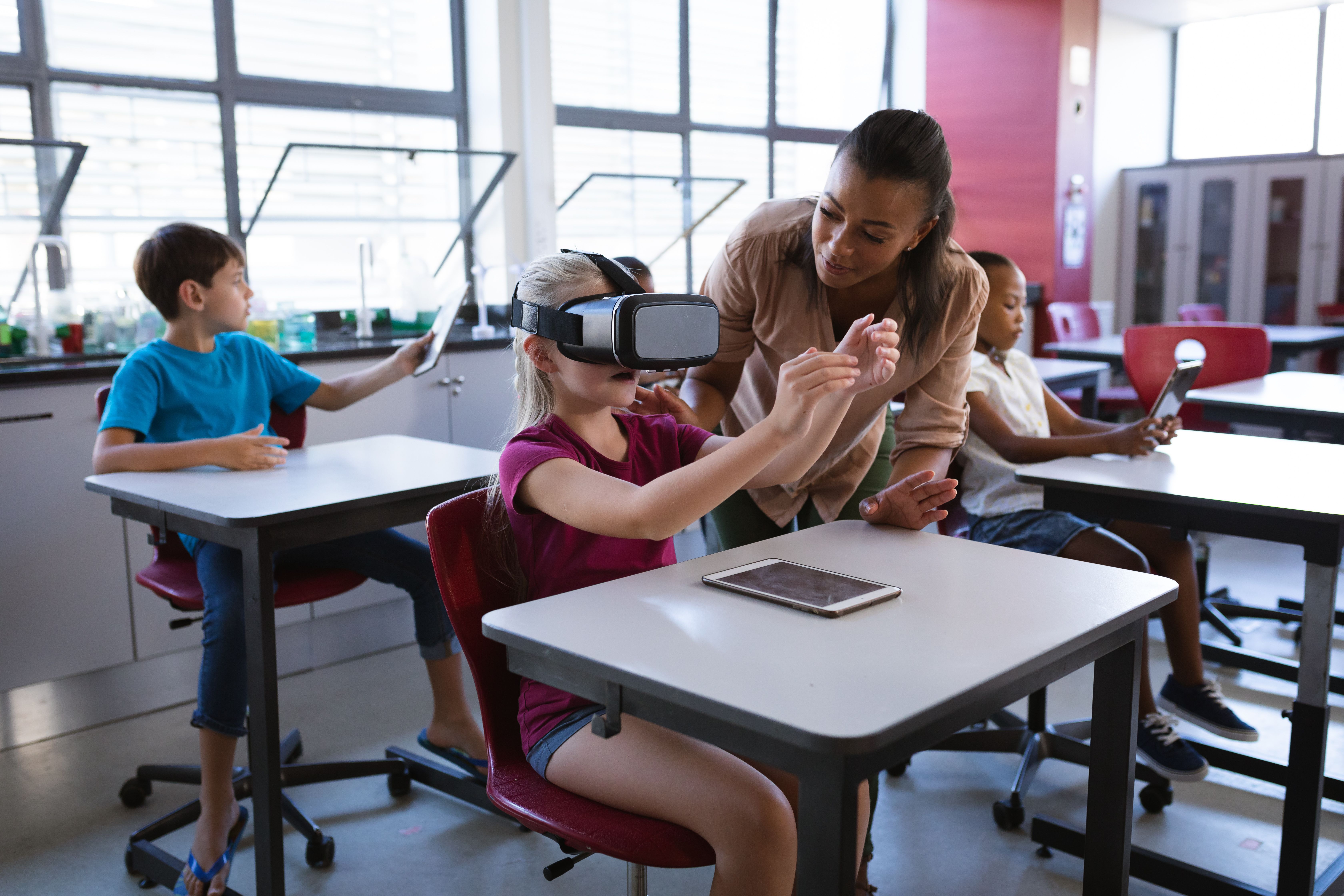As technology continues to advance, the way we learn and teach is also evolving. Immersive technologies play an increasingly important role in education, offering students new ways of engaging with their studies and teachers a range of opportunities to make learning more interactive and engaging. In this blog post, we'll explore how immersive technologies are impacting the future of education for the better.
How immersive technologies are changing the way we learn and teach
Immersive and extended reality technologies, like VR and AR technologies, have enabled a gradual shift in our teaching and learning approaches. We're no longer limited by physical distance, time constraints, or the availability of certain resources. Our technological resources give us boundless possibilities to further our instruction on critical topics essential to the progression of our societies by bridging virtual and physical worlds.
Now, teachers are embracing cutting-edge technologies that allow students to explore the depths of the ocean floor virtually. For instance, Our Ocean Life project uses AR technologies to show students how plastic pollution affects marine life. Drawing on true events, this interactive experience strives to raise awareness of how to protect our precious marine biodiversity.
By incorporating interactive elements and visuals into instruction, immersive technologies offer students a revitalizing level of engagement that completely transforms the way education is delivered. As technology and its capabilities work hand-in-hand with curriculums, we can see big changes in classrooms worldwide as we move forward.
Discover the future: how education and technology collaborate to create an enhanced teaching experience
As technology develops, the future of education looks bright. Tablets, interactive whiteboards, and digital textbooks are slowly but surely transitioning classrooms into an entirely new learning environment. Teachers will no longer be limited to traditional teaching methods and will incorporate more “hands-on” activities that stimulate the mind in different ways.
In recent research, scholars from different universities in China explored the role of VR in teaching arts. To give you an example, VR has been highly effective in instructing students on sketching tactics, styling composition, and forming space. Also, virtual reality has been used to teach about fine arts and help students strengthen their memory about relevant events in art history.
Not only can formal education benefit from this technological revolution, but distributed and informal learning based on the Internet can bring a whole new level of opportunity for students of all ages. This phenomenon creates an exciting atmosphere within educational facilities as instructors, teachers, and learners discover how to harness the power of technology to its fullest potential.
With immersive technologies, educational experiences in the future will be much more enjoyable than ever before.
Exploring the benefits of introducing immersive technologies in the classroom
Immersive technologies have dramatically transformed how education is administered, paving the way to an entirely novel educational journey.
Let's explore these eight benefits of introducing these technologies into the classroom:
Improved engagement
Immersive technologies capture student attention and keep them motivated to learn more, resulting in improved engagement and greater learning outcomes.
Enhanced problem-solving skills
By immersing themselves in interactive simulations, students can develop their problem-solving skills faster than they can apply their knowledge to real-world scenarios.
Improved retention
Through immersive technologies, students are more likely to retain information, as they have experiential learning opportunities that allow them to explore topics and concepts at their own pace. This helps ensure learners become comfortable with the material and understand the concepts thoroughly.
Deeper understanding of concepts
Being able to interact with virtual objects or environments realistically allows students to gain a deeper understanding of complex topics by observing how distinct elements interact with each other and how these interactions can change.
Increased collaboration
Immersive tools provide a platform for real-time discussion between peers from around the world, fostering a sense of collaboration among learners despite physical distance or cultural barriers.
Greater assessment abilities
With immersive technologies, teachers have access to powerful analytics, which can provide insights into individual performance, helping them track student progress and identify areas where additional teaching may be necessary.
Enhanced creativity
By allowing students to explore topics in an interactive environment, immersive technologies open up new possibilities for creative inquiry and experimentation with ideas that may not be possible within traditional classroom settings.
Improved accessibility
Immersive technologies provide new ways for students of all backgrounds and abilities to access educational materials and experiences which were not previously available because of physical limitations or costs associated with traditional methods of instruction.
As immersive technologies become more and more realistic, it's easy to imagine a future where they are commonplace in educational settings. These technologies have the potential to make learning more fun and engaging while also providing educators with new tools to teach effectively.
Let us know if you're interested in adopting extended reality technologies for education in your company. At Vection Technologies, we can provide you with solutions to make this dream come true.


